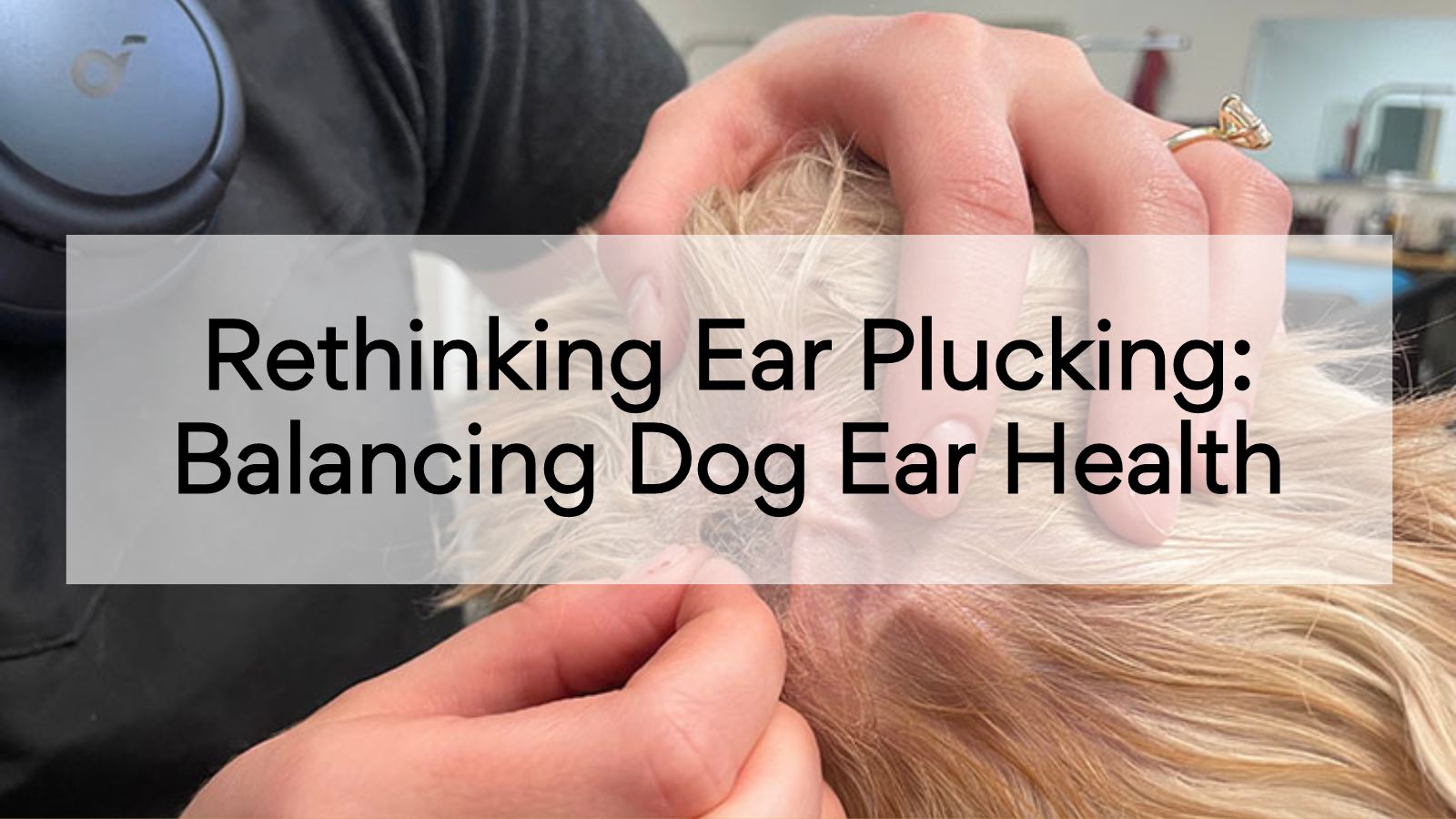Ear plucking has long been a debated topic in the grooming industry. For years, it was standard practice to remove hair from a dog's ear canal, especially in breeds like poodles, doodles and schnauzers. The idea was that removing this hair would improve airflow, reduce moisture buildup, and prevent infections. However, recent research suggests that this practice might not always be beneficial and, in some cases, could even cause harm. In this blog, we’ll explore the risks and benefits of ear plucking, when it should be considered and alternative approaches for maintaining ear health in your clients' dogs.
What Is Ear Plucking and Why Has It Been Done?
In the grooming world, ear plucking was historically recommended for dogs with hairier ear canals. The belief was that hair obstructed airflow, contributing to wax and moisture buildup, which could lead to infections. Groomers would use fingers or hemostats to remove this hair as part of the routine grooming process.
However, as veterinary advice and grooming techniques have evolved, the necessity of this procedure has come into question. Today, many veterinarians advise against routine plucking unless there’s a medical reason for it, as it can cause microscopic trauma to the ear canal, increasing the risk of infection. As a professional groomer, it's important to stay updated on the latest findings and recognize when ear plucking is truly needed—and when it should be avoided.

Understanding the Risks of Ear Plucking
Newer findings suggest that ear plucking can cause more harm than good. While it was once believed to be a preventative measure, experts now recognize that the procedure may actually increase the risk of infection. Plucking hair from the ear canal can cause microscopic tears in the delicate tissues, leaving the ear vulnerable to bacteria. Instead of preventing ear infections, this can often create an environment where infections are more likely to occur. Additionally, repeated plucking may lead to pathological conditions, where abnormal changes in the anatomy or function of the ear arise from the trauma.
Beyond the physical risks, ear plucking can also cause pain and discomfort, particularly in sensitive dogs. The irritation from micro-tears can make the dog’s ears feel sore, leading to further complications if the area becomes dirty or inflamed. Over time, the dog may also experience emotional stress, associating grooming sessions with pain and discomfort. This stress can make future grooming appointments more challenging and traumatic for both the dog and the groomer.

When Should Ear Plucking Be Considered?
In some cases, ear plucking may be necessary, especially for dogs with a history of ear infections or excessive hair and wax buildup not caused by previous plucking. In these situations, ear plucking can help prevent future infections. However, for otherwise healthy ears with no visible signs of infection or discomfort, it’s best to leave the hair alone and allow the ears to maintain their natural balance. Open communication with pet owners is essential—discuss the pros and cons of ear plucking and ensure a vet has been consulted in cases of recurrent ear issues.

Alternatives to Ear Plucking
As a groomer, there are several less invasive options you can offer to help maintain ear health without resorting to plucking
Ear Cleaning: Regular ear cleaning is one of the most effective ways to prevent buildup of wax and debris. Use professional-grade ear cleaning solutions that are gentle on the ear canal, ensuring that any excess dirt or moisture is properly removed without disrupting the ear’s natural balance. Offering this as part of a regular grooming package is a great way to ensure ongoing ear health without the need for plucking. Always use caution when cleaning ears, as excessive cleaning or using improper techniques can cause irritation. It’s recommended to consult with a vet if there are any signs of infection or discomfort before cleaning.
Trimming Ear Hair: Instead of removing hair from inside the ear canal, consider trimming the hair around the ear opening. This allows for better airflow while minimizing the risk of moisture buildup. Trimming excess hair also helps maintain a clean, tidy appearance and avoids the trauma that can come with plucking.

Monitoring Ear Health: As a professional groomer, it’s crucial to regularly check the condition of a dog's ears during grooming sessions. Look for any signs of redness, swelling, foul odor or discharge, which may indicate an infection or other issue. If any of these signs are present, advise the pet owner to consult a veterinarian.
Best Practices for Groomers
The key to providing excellent ear care in your grooming practice is understanding that each dog’s needs are unique. Educate yourself on the specific ear care requirements for different breeds and stay updated on the latest research and best practices. This allows you to provide the best possible care while avoiding unnecessary procedures.
For dogs with excessive hair or ear problems, having the right equipment on hand—such as ear powder, specialized cleaning solutions and quality grooming tools—can make a significant difference. Offer personalized advice to pet owners based on your professional assessment and collaborate with them to find the most appropriate ear care routine for their pet.

Final Thoughts
As groomers, our goal is to provide the best care for every dog that walks into the salon. While ear plucking was once a routine part of grooming, current research shows that it may not always be necessary or beneficial. By focusing on alternatives like regular ear cleaning, trimming and close monitoring, we can maintain our clients’ ear health without risking unnecessary discomfort or infection.
Staying informed about the latest updates in grooming practices allows us to offer the most effective, safe and comfortable grooming experience to our clients.

